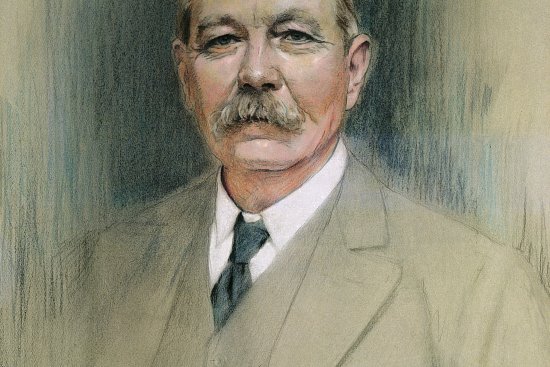
The beloved detective of 221B Baker Street is now in the public domain
Publishing your Sherlock Holmes fan-fiction just got a whole lot easier.
The Seventh Circuit Court ruled Monday that Arthur Conan Doyle’s famous detective is almost entirely in the public domain.
The decision came in a suit between the Doyle estate and Leslie Klinger, who was editing a set of stories inspired by Sherlock Holmes and other Doyle characters. This was Klinger’s second book of stories based on the Sherlock Holmes canon. For his first anthology, his publisher paid a licensing fee to Doyle’s estate, but this time Klinger decided to sue the estate instead of paying the fee.
Copyright on most of the Sherlock Holmes stories has already expired. Only Doyle’s last 10 stories, published between 1923 and 1927, were still protected under American copyright law, with their expiration dates between 2018 and 2022 depending on their original publication date.
Klinger claimed that the stories in his anthology only drew on material from Sherlock Holmes stories already in the public domain. The estate said that Doyle’s last 10 stories greatly helped to flesh out the character of Sherlock Holmes, so the estate’s hold on the character should extend until the copyright on the last story expired.
Judge Richard Posner sided with Klinger, saying that Doyle’s estate was using this literary explanation as a way to obtain almost 135 years of copyright protection, well beyond the norm. In his decision, Posner got excited and used some nerdy examples to explain his reasoning.
[time-brightcove not-tgx=”true”]Repeatedly at the oral argument the estate’s lawyer dramatized the concept of a “round” character by describing large circles with his arms. And the additional details about Holmes and Watson in the ten late stories do indeed make for a more “rounded,” in the sense of a fuller, portrayal of these characters. In much the same way we learn things about Sir John Falstaff in Henry IV, Part 2, in Henry V (though he doesn’t actually appear in that play but is merely discussed in it), and in The Merry Wives of Windsor, that were not remarked in his first appearance, in Henry IV, Part 1. Notice also that Henry V, in which Falstaff is reported as dying, precedes The Merry Wives, in which he is very much alive. Likewise the ten last Sherlock Holmes stories all are set before 1914, which was the last year in which the other stories were set. One of the ten, The Adventure of the Veiled Lodger (published in 1927), is set in 1896. See 2 William S. Baring-Gould, The Annotated Sherlock Holmes 453 (1967). Thus a more rounded Holmes or Watson (or Falstaff) is found in a later work depicting a younger person. We don’t see how that can justify extending the expired copyright on the flatter character. A contemporary example is the six Star Wars movies: Episodes IV, V, and VI were produced before I, II, and III. The Doyle estate would presumably argue that the copyrights on the characters as portrayed in IV, V, and VI will not expire until the copyrights on I, II, and III expire.